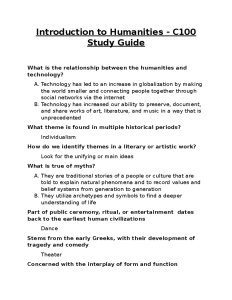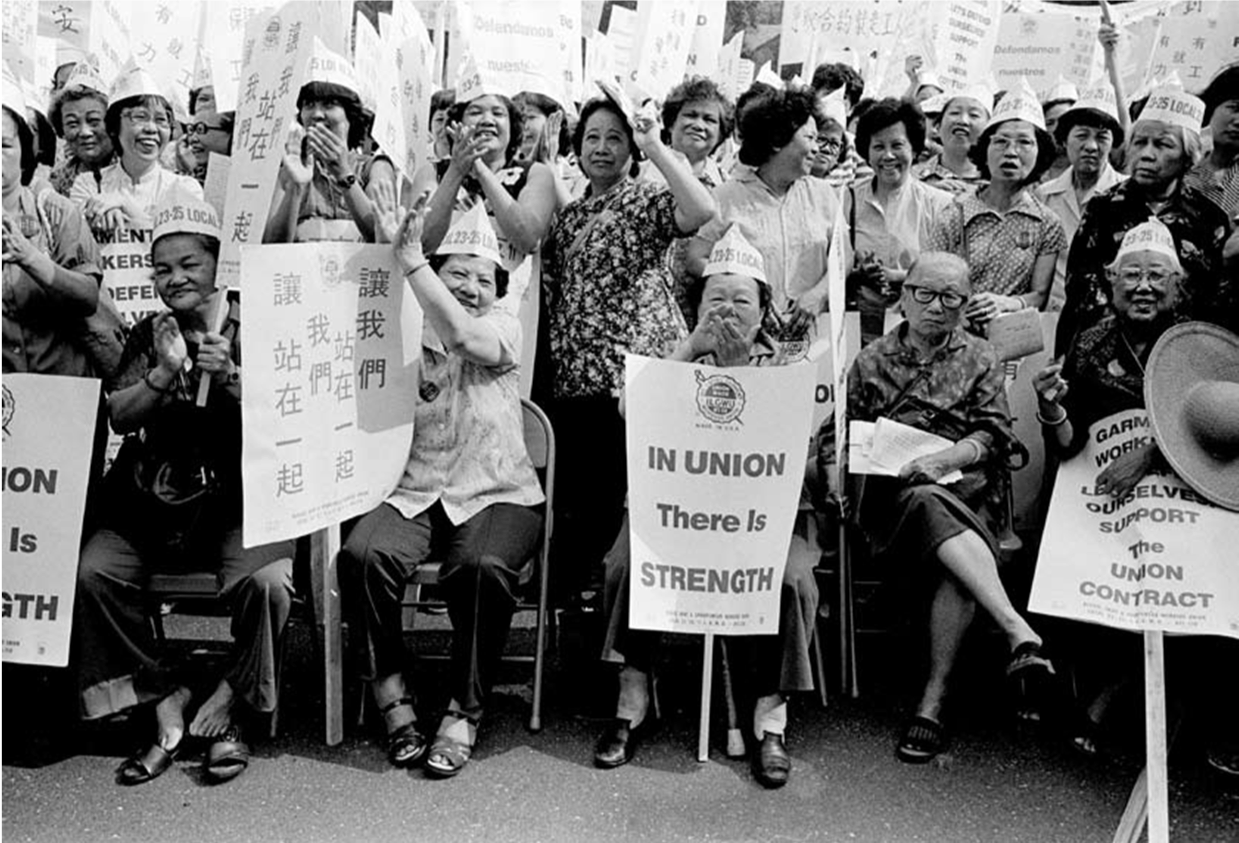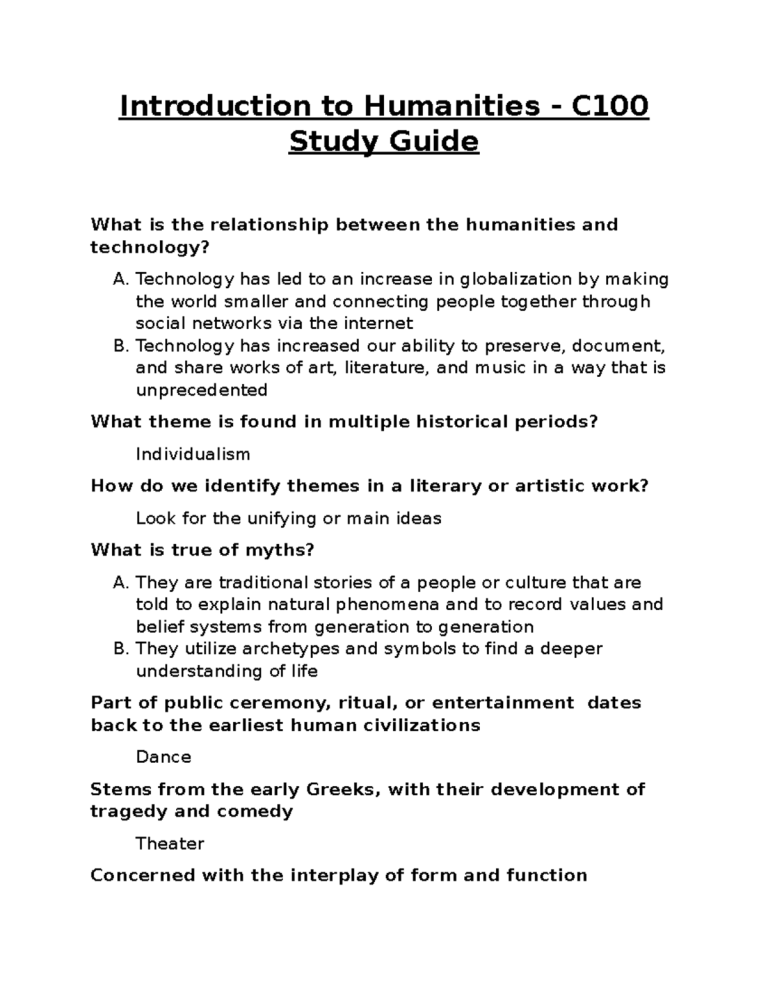Asian American women’s history is a vital yet often overlooked chapter in the broader narrative of the United States. A new exhibit at the Schlesinger Library, titled “Illuminate: Contextualizing Asian American Women’s Stories Through the Archives,” seeks to shed light on this underrepresented past. Featuring artifacts such as rare photographs of Ainu and Visayan women from the 1904 St. Louis World’s Fair, the exhibition not only highlights their stories but also emphasizes the enduring impact of Asian American women on society. By integrating personal narratives and archival materials, visitors are encouraged to confront their assumptions about these women’s roles throughout history. This remarkable collection not only celebrates the resilience and achievements of Asian American women but stimulates important conversations about their contributions from a historical perspective.
The exploration of the experiences and narratives of Asian American women, including their achievements and struggles, forms an essential part of America’s multicultural story. Through various artistic installations and curated displays, the Schlesinger Library’s initiative not only revisits the complexities of Asian women’s histories but also fosters a deeper understanding of their cultural legacies. By showcasing diverse Asian American stories and the voices of women throughout the years, the exhibition aims to contextualize their contributions against the backdrop of significant historical events, such as immigration laws and cultural exhibitions. This focus on personal and collective heritage provides an opportunity to engage with the diverse pathways of Asian American women’s journeys, reflecting both their challenges and triumphs in American society. Through such narratives, we can better appreciate the vital role these women play in shaping the discourse on equality and representation.
Shining a Spotlight on Asian American Women’s History
The exhibition “Illuminate: Contextualizing Asian American Women’s Stories Through the Archives” offers invaluable insights into the often overlooked narratives of Asian American women. Curated by Victor Betts and Erika Lee, this initiative aims to resurrect the stories of individuals whose lives have been marginalized throughout history. By highlighting artifacts like photographs from the 1904 World’s Fair, the exhibition challenges audiences to confront the uncomfortable truths surrounding the representation of Asian women in American culture. This not only eulogizes the forgotten figures from history but also encourages a deeper understanding of their contributions to society, art, and culture.
The importance of this exhibition lies in its ability to bring forth the voices of Asian American women, piecing together a narrative that many may not be aware of. The Schlesinger Library’s commitment to showcasing these stories reflects a growing awareness of the need to recognize the complex and rich histories of diverse populations. As more contemporary Asian American women share their own stories, the exhibition invites viewers to engage with a past that has been both hypervisible and invisible, creating a dialogue that seeks to bridge gaps in the historical record.
Art and Archives: Understanding Asian American Women’s Experiences
At the core of “Illuminate” is the juxtaposition of art and archival materials, which reveals the multifaceted experiences of Asian American women. The exhibition features visual storytelling through photographs and illustrations that represent the struggles and triumphs faced by women from various Asian backgrounds. By incorporating contemporary artworks, like those from Shaina Lu, the exhibit not only contextualizes historical events such as the Chinese Exclusion Act and Japanese American internment but also frames them within today’s ongoing conversations about race, identity, and resistance.
Engaging with the history of Asian women in America through these artistic expressions allows for a richer understanding of the cultural contributions they have made. The intersection of art and history serves to illuminate the personal stories behind institutional archives, transforming static artifacts into dynamic narratives. This strategy not only makes history more relatable but also underscores the importance of reclaiming one’s voice and agency, reminding us that the stories of Asian American women are integral to the broader tapestry of American history.
The Role of Education in Preserving Asian American Histories
The collaborative efforts between students and archivists in the “Illuminate” exhibition demonstrate the critical role education plays in preserving Asian American histories. Through a comprehensive course co-taught by Betts and Lee, students have had the opportunity to delve into archived materials and develop their own research projects, fostering a sense of ownership over historically significant narratives. This educational model not only empowers students but also emphasizes the need for inclusivity in historical scholarship, ensuring that diverse stories are recognized and valued.
As students like Sophia Wang uncover legal cases and personal accounts, they contribute to a growing body of knowledge that challenges the dominant historical narratives. Their findings reveal not just past injustices but also the pioneering efforts of Asian American women who fought for their rights through the courts. By studying these overlooked histories through a scholarly lens, the next generation of historians can begin to shift the narrative towards a more equitable and representative understanding of American history.
Engaging with Archival Stories: The Impact of Visibility
Visibility is a crucial theme in the exploration of Asian American women’s history, especially within the context of exhibitions like “Illuminate.” The act of showcasing archival materials allows for a broader recognition of the contributions and experiences of Asian women, who have often been rendered invisible in the historical narrative. This exhibition speaks to the fundamental need to document and celebrate these stories, not just for the sake of history but to inspire action and change in contemporary society.
Engaging the public with these narratives creates a powerful opportunity for education and awareness, reminding us that every story holds the potential to impact societal perceptions. As curators and educators shine a spotlight on the often-ignored voices of Asian American women, audiences are invited to reconsider the significance of these histories in the present day. This visibility, when linked to current conversations about race, identity, and social justice, offers a transformative path toward understanding the complexities of America’s past.
Community and Cultural Resilience Among Asian American Women
Asian American women’s history is imbued with themes of resilience and community, often highlighted in exhibitions like “Illuminate.” The exhibition showcases how Asian women have historically banded together to resist oppression and advocate for their rights. Through community organizing and activism, these women have led the charge for social justice, particularly in the context of anti-Asian violence, which has surged in recent years. This aspect of shared struggle and collective identity is vital to recognizing their profound influence on American culture and civil rights movements.
Furthermore, the stories highlighted in the exhibition not just recount past struggles but also celebrate the victories achieved by these women. From the women’s suffrage movement to contemporary activism against discrimination, Asian American women have continuously contributed to the fabric of American society. By examining these narratives, the exhibition provides a platform for understanding the ongoing fight for equality and empowerment, thus reinforcing the notion that the legacy of Asian American women is one of strength, resilience, and inspiring communal support.
Unveiling the Invisible: The Need for Continued Research
Despite the significant strides made through exhibitions like “Illuminate,” much work remains to be done to unearth the hidden histories of Asian American women. Many stories are still undocumented or lost, emphasizing the importance of continued research and archival efforts. Scholars, students, and community members must collaborate to collect more narratives and materials that reflect the diverse experiences of Asian women throughout history. This initiative is essential not just for academic purposes, but for ensuring that future generations have access to richer, more inclusive histories.
The significance of this inquiry extends beyond the past; it has palpable implications for the present. By uncovering these forgotten stories, we can better understand the factors that have shaped contemporary Asian American identities and experiences. As exhibitions like “Illuminate” push for a reassessment of historical narratives, they invite all of us to confront the omissions within our understanding of American history and to actively participate in the ongoing project of reclamation and representation.
The Intersection of Personal and Political in Asian American Women’s Stories
The exhibition “Illuminate” serves as a vital exploration of the intersection between personal experiences and broader political movements in Asian American women’s history. By showcasing individual stories against the backdrop of significant historical events, the exhibition highlights how personal narratives are intertwined with collective struggles for justice, equality, and representation. This connection underscores the broader implications of how Asian American women have navigated their identities in a complicated socio-political landscape.
Through the lens of personal storytelling, the exhibition illustrates the way that individual agency can intersect with political activism. For example, the stories of legal pioneers like Ah Fong reflect the profound impact of personal experiences on institutional change. Exhibitions that highlight such connections encourage visitors to consider the role of personal narrative in shaping the socio-political contexts of marginalized communities, advocating for a deeper engagement with the complexities of Asian American histories.
Celebrating Asian American Women’s Contributions to Arts and Culture
“Illuminate” does more than just highlight the historical struggles of Asian American women; it also celebrates their substantial contributions to arts and culture. The exhibition emphasizes the importance of both historical and contemporary works created by Asian women, showcasing their creativity and resilience through various mediums—from photography to literature and culinary arts. The reflections of artists like Shaina Lu serve as a reminder of the cultural richness that Asian American women have brought to society.
By drawing attention to the artistic endeavors of Asian American women, the exhibition encourages us to appreciate the diversity of narratives that exist within this community. It challenges stereotypes and invites visitors to engage with the depth of creativity that has emerged from these experiences. Celebrating these contributions helps to ensure that Asian American women’s voices are not only heard but are also valued within the broader cultural discourse.
Advocating for Greater Inclusivity in Historical Narratives
The exhibition “Illuminate: Contextualizing Asian American Women’s Stories Through the Archives” operates as a powerful advocate for greater inclusivity in historical narratives. To understand American history fully, it’s crucial to include the voices of Asian American women, whose stories have been historically overlooked. This lack of representation impacts not only how history is recorded but also how it is taught and understood in educational institutions. By highlighting the efforts of students and archivists in this exhibition, we see the potential for a more expansive view of history.
This call for inclusivity extends to all realms of academia and public discourse, encouraging broader recognition of diverse narratives. By respecting the intricacies of individual experiences, we can foster a more profound understanding of the complexities that characterize the American experience. Thus, exhibitions like “Illuminate” play a critical role in advocating for a more comprehensive and representative historical narrative that honors Asian American women’s contributions and influences throughout history.
Frequently Asked Questions
What is the significance of the Schlesinger Library’s exhibition on Asian American women’s history?
The Schlesinger Library’s exhibition, “Illuminate: Contextualizing Asian American Women’s Stories Through the Archives,” highlights the often overlooked narratives and contributions of Asian American women throughout history. By showcasing artifacts spanning 150 years, including photographs and legal documents, the exhibition invites reflection on the roles of these women and challenges historical erasure, underlining the importance of their stories in understanding broader American history.
How does the ‘Illuminate’ exhibition address the history of Asian women?
The ‘Illuminate’ exhibition at the Schlesinger Library addresses the history of Asian women by presenting a diverse collection of materials, such as photographs of Ainu and Visayan women exhibited at the 1904 World’s Fair, and highlighting pivotal legal cases, like those involving Chinese women in the 19th century. It aims to shed light on their struggles, contributions, and the marginalization they faced, providing a comprehensive view of Asian American women’s history.
What types of artifacts are featured in the Asian American women’s exhibition at the Schlesinger Library?
The exhibition features a variety of artifacts that illustrate Asian American women’s history, including historical photographs, political posters, comic books, zines, and archival materials. These items not only reflect the experiences of Asian American women but also situate their stories within the context of significant historical events, such as the Chinese Exclusion Act and Japanese American internment.
Who collaborated on the Schlesinger Library’s Asian American women’s history exhibition?
The exhibition was developed collaboratively between students and faculty, co-taught by Victor Betts and Erika Lee, and incorporated a spring undergraduate course titled “Asian American Women’s History in the Schlesinger Library.” This collaborative model emphasizes research and learning, enabling students to explore and contextualize the often hidden stories of Asian American women.
How does the ‘Illuminate’ exhibition challenge perceptions of Asian American women’s roles in history?
The ‘Illuminate’ exhibition challenges perceptions of Asian American women’s roles by encouraging viewers to reevaluate historical narratives that often marginalize these figures. By presenting their stories alongside artifacts, legal precedents, and artistic representations, the exhibition aims to highlight the significant yet frequently overlooked contributions of Asian American women to American history.
What is the role of the community in the Schlesinger Library’s efforts to document Asian American women’s stories?
The Schlesinger Library actively engages with the community to enhance its collections related to Asian American women’s history. Through partnerships and public contributions, the library seeks to collect more stories, artifacts, and narratives that have historically been overlooked, fostering a richer understanding of Asian American women’s contributions and experiences.
What impact has the COVID-19 pandemic had on the visibility of Asian American women’s history?
The COVID-19 pandemic has underscored the surge in anti-Asian violence, prompting a renewed focus on Asian American women’s history and their roles in social justice movements. The ‘Illuminate’ exhibition situates these contemporary issues within the historical context of Asian American women’s struggles, highlighting their ongoing fight for justice and recognition.
What can visitors expect to learn from the ‘Illuminate’ exhibition at the Schlesinger Library?
Visitors to the ‘Illuminate’ exhibition at the Schlesinger Library can expect to learn about the diverse and rich history of Asian American women through engaging artifacts, personal stories, and contextualized historical narratives. The exhibition encourages reflection on societal assumptions and aims to illuminate the integral role these women have played in shaping American history.
How can the stories of Asian American women inform current discussions about race and identity?
The stories of Asian American women provide critical insight into the intersections of race, gender, and identity in America. By examining how these women have navigated systemic challenges and societal expectations, current discussions about race and identity can be enriched, fostering a deeper understanding of contemporary issues and the importance of inclusive historical narratives.
| Key Point | Details |
|---|---|
| Exhibition Overview | The Schlesinger Library exhibit titled ‘Illuminate’ showcases Asian American women’s history through various artifacts, including photographs and documents, emphasizing their significance over the past 150 years. |
| Historical Artifacts | Photographs of Ainu and Visayan women from the 1904 St. Louis World’s Fair highlight the marginalization and exoticization of Asian American women, whose stories have often been forgotten. |
| Collaborative Education | The exhibit was developed alongside a course on Asian American Women’s History, focusing on co-creation and reflective learning about the roles and perceptions of these women in history. |
| Legal Contributions | The case of Ah Fong, a Chinese woman in 1874, illustrates the legal challenges faced by Asian American women and their struggles for rights, which played a role in shaping immigration law. |
| Artistic Representation | The exhibit includes artwork that enhances the archival materials and reflects the historical narrative of Asian American women, especially in activism and community leadership. |
| Commitment to Representation | Curator Victor Betts emphasizes the need to expand collections and understanding around Asian American women’s histories to foster a more comprehensive view of American history. |
Summary
Asian American women’s history is a rich and often overlooked aspect of the broader narrative of American history. The recent exhibition at the Schlesinger Library illuminates the unique roles, challenges, and contributions of Asian American women throughout history, revealing stories that have long been marginalized. By showcasing artifacts, personal stories, and historical documents, this exhibition encourages a deeper understanding of the past and highlights the importance of Asian American women’s voices in shaping our collective history. As we explore the ongoing impact of these histories, it becomes clear that recognizing and celebrating their contributions is essential to understanding the complexities of American identity.









